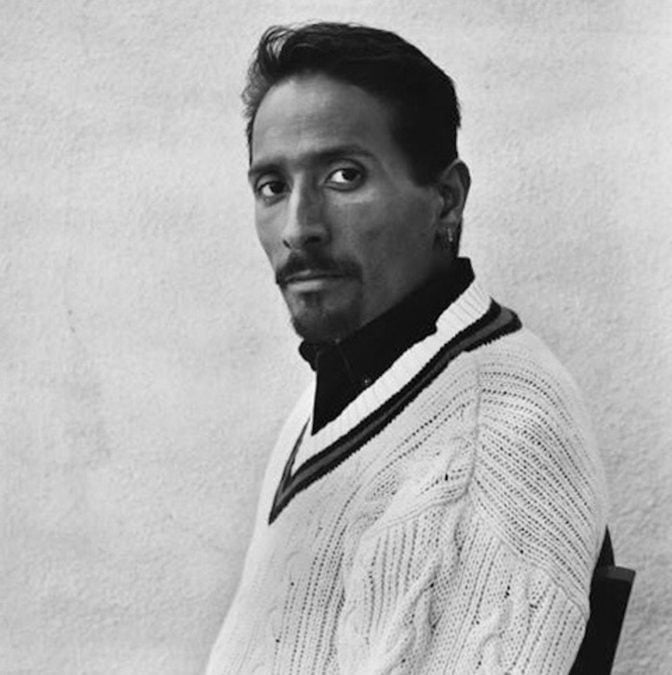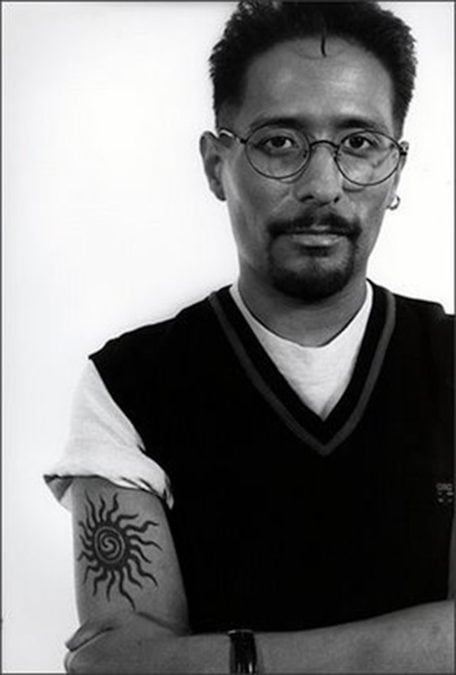
When Gil Cuadros published “City of God” in 1994, it was among the first literary works to document AIDS through the eyes of a poz, queer Latinx writer and artist. Photo: Courtesy of Terry Wolverton
When Gil Cuadros published “City of God” in 1994, it was among the first literary works to document AIDS through the eyes of a poz, queer Latinx writer and artist.
Whether it was Paul Monette’s “Borrowed Time,” Tony Kushner’s “Angels in America” or the Jonathan Demme-directed film “Philadelphia,” the most prominent depictions of AIDS in the United States focused on well-to-do, white gay men. The black and brown men who resisted and died alongside them were largely absent from cultural depictions.
‘City of God’
“City of God” is taught in Latinx and Chicano studies courses in universities throughout the United States and is the subject of a great deal of scholarly research.
The issues Cuadros addresses — homophobia and violence within the Latinx communities, racism within the white LGBTQ communities, the ravages of AIDS especially in poor and communities of color, the need for activism, and the confluence of traditions that shape Latinx, queer identity — are as relevant today as they were a quarter century ago.

The issues Gil Cuadros addresses — homophobia and violence within the Latinx communities, racism within the white LGBTQ communities, the ravages of AIDS especially in poor and communities of color, the need for activism, and the confluence of traditions that shape Latinx, queer identity — are as relevant today as they were a quarter century ago. Photo: Laura Aguilar.
A free panel discussion of Cuadros work and influence will take place Saturday, November 2, at the Vincent Price Art Museum. Panelists will be Pablo Alvarez, Kevin Martin, Rafael Pérez-Torres, Amy Scholder, and Justin Torres. A reception follows the event.
‘Undocumented Tales’ season 3, more undocumented queer Latinx stories
In his master’s thesis, “Gil Cuadros’ AZT-Land: A queer Chicano literary heritage,” Pablo Alvarez writes about the discovery of Cuadros’ work: “I drove home that night captivated by the pages I read while waiting at red lights… Each sentence and stanza inspired nostalgia… I read the pages in secret and certain stories were difficult for me to read because they spoke to my own desires and fears.”
Gil Cuadros
I met Gil Cuadros in 1988, when he joined a creative writing workshop for people with HIV/AIDS I was teaching at the Los Angeles Gay and Lesbian Center. He was just 26 at the time and had recently been diagnosed with ARC (AIDS-related complex; this term was used in the early years of AIDS) and told me he had six months to live.
Laura Aguilar lesbian, Latinx photos acquired by Getty Museum
He had written some poetry before this. His longtime friend, lesbian photographer Laura Aguilar, pestered him about attending the workshop at the Center. She knew me from previous work I had done in the community of lesbian artists.
My intention with the workshop was to provide a safe space in which participants could write and talk about the issues they were facing with their HIV status, but also to provide a foundation in the craft of writing, tools to translate their powerful content into potent stories, poems and essays.
Chicano, AIDS activism
Right from the beginning, Cuadros began to produce poems, stories and essays of great power. He wove together themes of being gay, Chicano, and working class with AIDS activism. He often threaded in stories about his family and expressions of spirituality that drew from Catholicism, indigenous cultures and Eastern traditions.
Cuadros had many influences in addition to the workshop. He was an AIDS activist, he was involved in a burgeoning movement of Latinx artists in Los Angeles, and he was regarded as part of a thriving literary community that included writers such as Wanda Coleman and Eloise Klein Healy. Cuadros began to publish work in journals and anthologies and to give public readings of his work. People responded to his powerful articulation of the experience of being a gay Latino with AIDS, an experience that was missing from the cultural narrative of AIDS.
I was so thankful that Cuadros lived long enough to see the publication of his collection of stories and poems by City Lights Press. The work was not only an evocative expression of the times, but also continues to speak to readers today, including many who were not alive during that first wave of the AIDS epidemic in the U.S.
